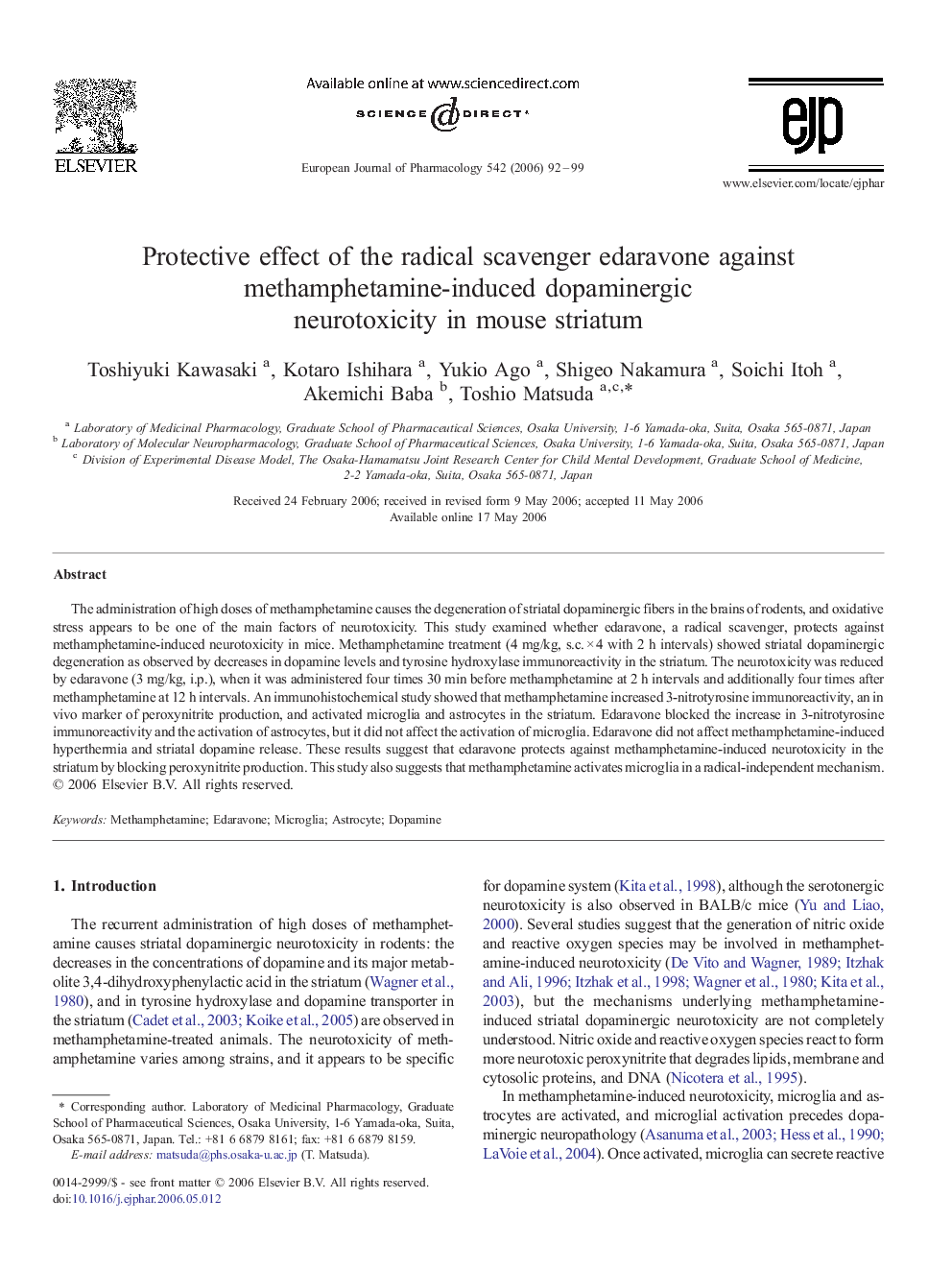| Article ID | Journal | Published Year | Pages | File Type |
|---|---|---|---|---|
| 2537039 | European Journal of Pharmacology | 2006 | 8 Pages |
The administration of high doses of methamphetamine causes the degeneration of striatal dopaminergic fibers in the brains of rodents, and oxidative stress appears to be one of the main factors of neurotoxicity. This study examined whether edaravone, a radical scavenger, protects against methamphetamine-induced neurotoxicity in mice. Methamphetamine treatment (4 mg/kg, s.c. × 4 with 2 h intervals) showed striatal dopaminergic degeneration as observed by decreases in dopamine levels and tyrosine hydroxylase immunoreactivity in the striatum. The neurotoxicity was reduced by edaravone (3 mg/kg, i.p.), when it was administered four times 30 min before methamphetamine at 2 h intervals and additionally four times after methamphetamine at 12 h intervals. An immunohistochemical study showed that methamphetamine increased 3-nitrotyrosine immunoreactivity, an in vivo marker of peroxynitrite production, and activated microglia and astrocytes in the striatum. Edaravone blocked the increase in 3-nitrotyrosine immunoreactivity and the activation of astrocytes, but it did not affect the activation of microglia. Edaravone did not affect methamphetamine-induced hyperthermia and striatal dopamine release. These results suggest that edaravone protects against methamphetamine-induced neurotoxicity in the striatum by blocking peroxynitrite production. This study also suggests that methamphetamine activates microglia in a radical-independent mechanism.
